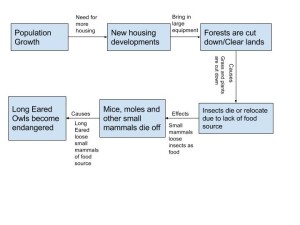Discuss what biodiversity you have and how residents in your hometown affect the biodiversity?
My hometown is Doylestown, PA, which is a suburban area in Bucks County. Doylestown the surrounding areas are known for acres of land filled with species of all types. We have many species of plants, birds, and animals. We have a wide diversity of wildlife, which consists of deer, red foxes and wild turkeys. One of the ways that residents/humans in the area has impacted biodiversity is through development and lost of habitat for animals. Just in the past 10 years, our area has been build up with new shopping strip malls, chain restaurants and housing developments. My house is not in a housing development; it is situated on a large acreage of land. About 10 years ago a new development was build right beside my house. Prior to that new development, we would see deer and fox all the time, however in the past few years I can count on two hands how many times I have actually seen a fox near my house. We also use to have lots of owls in the area. I cannot remember the last time I saw an owl near my home. The long eared owl is an owl that is now a state threatened species because of their loss of trees and grasslands in the area for development.
System Diagram- Choose 1 biodiversity specific threat in your home town and develop a system diagram to demonstrate how human activity effects biodiversity? I’m doing my diagram on the example of the Long Eared Owl in my town
What are some ways to improve biodiversity in your hometown for the future?
As I mentioned above I live in a very suburban area. There are still a lot of acres and some farms that are not developed, which does give hope to the existence of our biodiversity. One way we can improve or prevent destruction of our biodiversity is to stop or reduce the development in our area. I know they say you can never stop progress, however I know one way my township has done this is through setting aside land as conservation areas. In addition our township is using local funds to purchases farms. But instead of buying the farms to develop, they are buying them to be preserved. They allow the farmers to farm the land however the county purchases the land and the land can never be developed. Another way is to be active in the community and be involved in knowing what development is being proposed in the area and join activist groups to stop development. I know a few years back there was one area where a new shopping strip mall was being proposed and one of the activist groups actually had fundraisers, and sponsors that contributed funds and they were able to purchase the land and prevent the development of the shopping center.


Hi Kristina, my name is Samantha and I took the time to read your blog post for this week. I like how you mentioned your hometown of Doylestown in this weeks entry. That was a very creative touch since we had to create our own post this week. Perhaps development is not such a bad idea. A new up and coming trend is urban gardening, and something as simple as that can certainly be beneficial to the biodiversity.
Here is a link to my blog: http://geog030.dutton.psu.edu/2016/04/15/learning-activity-create-your-own-learning-activity/
Hello, I am from Doylestown as well! It was easy for me to understand and relate to your post. Doylestown has some beautiful farm land but also is very commercialized and built-up in other parts. I think reducing the development of the area would absolutely be beneficial to the biodiversity. In my post I talked about how humans are affecting species like bees and sea turtles.
You can read my post here:
http://geog030.dutton.psu.edu/2016/04/14/katie-cuerou-biodiversity/